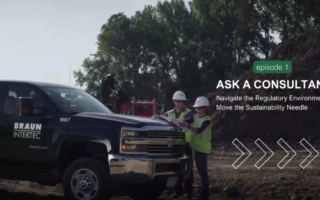EPA’s FY 2022 – 2026 Strategic Plan calls for a “whole-of-government” approach to tackling climate change and advancing environmental justice throughout the country. The plan outlines 7 strategic goals, each provided with specific and measurable targets to demonstrate progress.
What is Expected from the Plan?
Strategic Goal No. 1 is “Tackle the Climate Crisis”. In concert with the EPA plan, the Biden Administration has set a net-zero greenhouse gas (GHG) emissions goal by 2050. In its whole-of-government approach, the EPA will leverage other federal agency’s authority to impact changes in GHG emissions, such as the Federal Highway Administration (FHWA) and the Department of Energy (DOE), which have also developed their own strategic plans to meet the 2050 goal. The final 2050 solution will be an integrated, cross-sector, collaborative effort that will facilitate fast-paced innovation and advancements in technology while promising improved air quality for the nation. The plan has a particular focus on historically underserved and disadvantaged sectors of the population that are located in or near areas of the heaviest concentration of air pollutants. This change has the potential to be one of the most transformative changes our society will experience, as the reduction in the use of fossil fuels to power vehicles will drive down changes in the oil and gas, refining, manufacturing, and electric industries. If successfully implemented, the plan will stimulate the U.S. economy with the manufacture and production of new fuels, equipment, technologies, and the creation of high-tech job markets and consumer products.
Road to Industrial Decarbonization
In 2020, it was reported that industry operations accounted for 33% of US energy use and 30% of energy-related CO2 emissions. The DOE acknowledges the industry is “difficult-to-decarbonize” due to the “diversity of energy inputs that feed into a heterogeneous array of industrial processes.” So what does that mean exactly? Essentially, industrial decarbonization is an opportunity to take a holistic approach to analyzing industrial operations and how innovation can both reduce impacts and increase competitiveness. The DOE roadmap lays out four pillars essential to decarbonization: “(1) energy efficiency; (2) industrial electrification; (3) low-carbon fuels, feedstocks, and energy sources (LCFFES); and (4) carbon capture.” Again, this strategy requires addressing all four pillars at the same time to be truly impactful.
As you can see, the key word here is “holistic.” To sufficiently impact our carbon footprint, government agencies, industries, and states must focus on innovation and cooperation with a cross-sector approach. Join us on December 8th for our live webinar, “Adapting Your Business to the EPA’s Strategic Environmental Agenda”, as our speakers discuss the up- and down-stream impacts of these sweeping changes and advancing the industry over the next decade towards lower carbon emissions. The webinar will include discussion of the opportunities provided by these changes, the challenges they pose, and how different sectors of the industry will need to grow and adapt to meet these changes.




